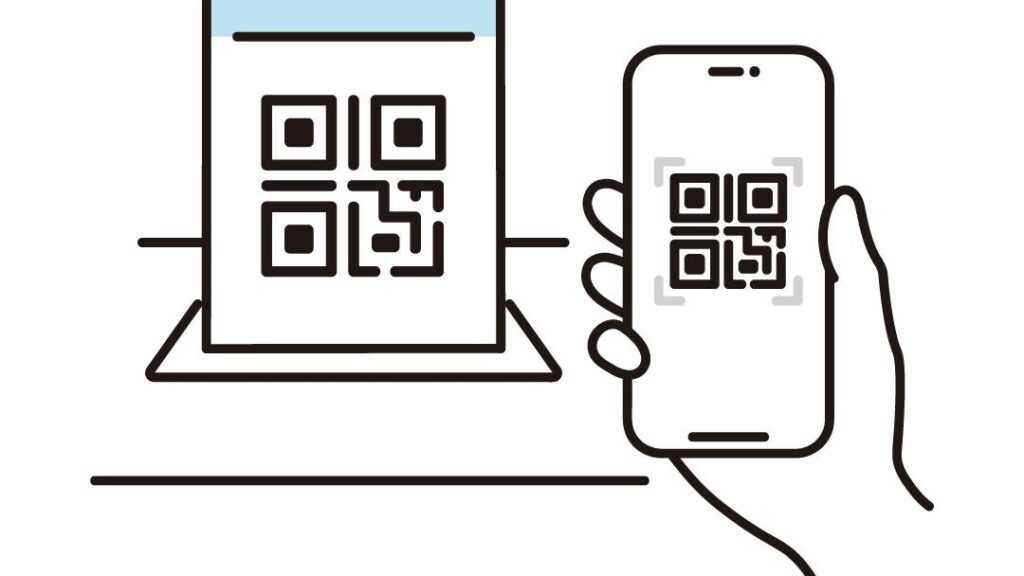Understanding Decentralized Finance (DeFi)
Decentralized Finance (DeFi) is revolutionizing how we view traditional financial operations by leveraging blockchain technology to create open, permissionless systems.
What Is DeFi?
DeFi, or Decentralized Finance, refers to a system that uses decentralized networks and smart contracts to provide financial services. It operates without traditional intermediaries like banks or brokers, relying on blockchain networks like Ethereum.
Users retain control over their assets and engage in lending, borrowing, and trading through decentralized applications (dApps). Unlike traditional finance, DeFi’s transparency ensures all transactions are publicly recordable and verifiable on the blockchain.
Key Components of DeFi
DeFi comprises several critical components:
- Smart Contracts: Self-executing contracts with the terms directly written into code; for example, automating loan disbursements upon collateral provision.
- Decentralized Exchanges (DEXs): Platforms like Uniswap and Sushiswap that facilitate peer-to-peer trading without intermediaries.
- Stablecoins: Cryptocurrencies pegged to real-world assets like USD, e.g., USDT and DAI, mitigate volatility.
- Lending Platforms: Protocols such as Aave and Compound allow users to lend or borrow assets directly from others, typically offering interest rates based on supply and demand.
- Yield Farming: Strategies where investors lock up their assets in DeFi protocols to earn rewards, often through liquidity provision or staking.
The Rise of DeFi
DeFi has witnessed exponential growth. DeFi Pulse reports Total Value Locked (TVL) in DeFi protocols surpassed $100 billion in 2021, up from less than $1 billion in early 2020.
This rapid adoption is driven by the decentralized nature of DeFi, which offers greater financial inclusion and innovation. High-profile integrations and developments continue to draw retail and institutional investors, signaling a significant shift in the future of global finance.
Traditional Finance vs. DeFi
Traditional finance, centered around centralized institutions, contrasts starkly with the decentralized structure of DeFi. Exploring these differences unveils how DeFi is revolutionizing financial systems.
Centralized vs. Decentralized Systems
Centralized systems rely on intermediaries like banks, providing stability and security but often resulting in inefficiencies and higher costs. For example, banks handle loans, deposits, and transactions, but they require middlemen, leading to delays. Additionally, centralized systems impose strict access controls, limiting services based on geography and credit scores.
In contrast, decentralized systems operate on blockchain technology, eliminating the need for intermediaries. Users access financial services directly through dApps, ensuring speed and reduced costs. Smart contracts automate transactions and reduce human error. Access is universal, not restricted by geographic or socio-economic status.
Efficiency and Transparency
Traditional finance often suffers from lengthy processes and a lack of transparency. Paperwork, bureaucratic procedures, and multiple verification steps prolong transaction times and increase costs. Transparency is limited, with users having little insight into how their funds are managed or utilized.
DeFi offers enhanced efficiency and transparency. Automated processes through smart contracts enable near-instantaneous transactions. For example, lending and borrowing occur seamlessly without waiting for approvals.
Blockchain’s public ledger allows users to verify transactions in real-time, ensuring full transparency. Data on transaction volumes, smart contract codes, and asset reserves are readily accessible, fostering trust and accountability.
Major DeFi Applications and Their Impact
DeFi’s impact on traditional finance is vast, spanning numerous applications that drive adoption and innovation. Here are some of the major DeFi applications and their respective impacts.
Lending and Borrowing Platforms
Lending and borrowing platforms in DeFi allow users to lend their assets to earn interest or borrow assets by providing collateral. These platforms operate without intermediaries, reducing costs and increasing the speed of transactions.
Examples include Aave and Compound, which automate loans through smart contracts. According to DeFi Pulse, as of 2021, lending platforms hold billions in TVL, showcasing their growing influence.
Decentralized Exchanges (DEXs)
Decentralized exchanges facilitate peer-to-peer trading of cryptocurrencies directly from users’ wallets. They eliminate the need for a central authority, enhancing security and privacy. DEXs like Uniswap and SushiSwap enable users to trade tokens seamlessly without intermediaries. In 2021, DEXs saw more than $1 trillion in trading volume, reflecting their significant market impact.
Stablecoins
Stablecoins bridge the volatility gap in the cryptocurrency market by pegging their value to assets like fiat currency. They provide stability and are used for transactions, payments, and as collateral in DeFi platforms.
Notable examples include Tether (USDT) and USD Coin (USDC). By offering price stability, stablecoins have become integral to DeFi, with their market capitalization exceeding $100 billion in 2021.
Yield Farming and Staking
Yield farming and staking are strategies that allow users to earn rewards by providing liquidity or holding tokens. Yield farming involves lending or staking crypto assets to generate high returns, while staking entails locking up tokens to support network operations and earn rewards.
Platforms like Yearn.finance and SushiSwap offer these opportunities, drawing users seeking passive income. Yield farming and staking have significantly boosted DeFi’s TVL, contributing to its rapid growth.
Benefits of DeFi Over Traditional Finance

Decentralized Finance (DeFi) offers several advantages over traditional financial systems. DeFi’s decentralized nature, smart contracts, and open access contribute to its superiority in several areas.
Accessibility and Inclusivity
DeFi’s decentralized system allows anyone with an internet connection and a digital wallet to access financial services. Traditional banks impose stringent requirements like:
- credit checks
- minimum balances
- documentation
Conversely, DeFi platforms enable users worldwide, including underbanked populations, to participate in financial activities without these barriers. For example, platforms like Aave and Compound facilitate lending and borrowing without credit scores.
Reduced Costs
DeFi eliminates intermediaries, reducing overall transaction costs. In traditional finance, banks, clearinghouses, and brokers take fees that increase transaction costs. In contrast, DeFi transactions occur directly between parties using smart contracts. Transaction fees on networks like Ethereum, though they can fluctuate, often remain lower than traditional banking fees. Users can save substantial amounts by transacting on DeFi platforms compared to conventional systems.
Enhanced Security and Privacy
DeFi leverages blockchain technology to enhance security and privacy. Traditional finance relies on centralized databases vulnerable to hacking and fraud. DeFi transactions, recorded on immutable blockchain ledgers, offer increased security.
Additionally, DeFi platforms prioritize user privacy by allowing pseudonymous transactions, unlike traditional institutions requiring personal information disclosure. For instance, protocols like Uniswap and SushiSwap operate on decentralized exchanges without needing user data, thus safeguarding privacy.
Challenges and Risks of DeFi
Decentralized Finance (DeFi) offers many opportunities but also brings several challenges and risks. Understanding these issues is important for all stakeholders.
Regulatory Concerns
DeFi operates in a relatively unregulated space, making it a target for scrutiny. Regulatory bodies like the SEC and CFTC are actively looking into DeFi activities to ensure compliance with existing laws.
Compliance challenges arise because DeFi spans multiple jurisdictions, each with unique regulations. This fragmented regulatory environment complicates efforts to create a standardized framework. DeFi platforms must navigate these regulations carefully, as violations can lead to legal actions and loss of user trust.
Security Vulnerabilities
Security in DeFi is a major concern due to its reliance on smart contracts. Coding errors or vulnerabilities in smart contracts can be exploited, leading to significant financial losses. High-profile breaches like the $600 million Poly Network hack highlight these risks. DeFi projects must undergo rigorous security audits to identify and fix vulnerabilities. Despite these measures, new attack vectors continue to emerge, challenging the overall security landscape of DeFi.
Market Volatility
DeFi markets are highly volatile, akin to the broader cryptocurrency market. Prices of assets on DeFi platforms can fluctuate sharply due to various factors, including market sentiment and liquidity.
This volatility can affect the value of collateral in lending and borrowing platforms, leading to liquidation risks. Users and developers must implement risk management strategies to mitigate the impact of such volatility. Stability mechanisms, like those employed by stablecoins, are essential in achieving some degree of market stability within DeFi ecosystems.
Future of DeFi in Transforming Traditional Finance
Decentralized Finance, or DeFi, has the potential to reshape traditional finance by leveraging blockchain technology and innovative financial solutions.
Potential Innovations
Emerging DeFi solutions introduce innovations that disrupt conventional financial systems. Automated Market Makers (AMMs), which enable seamless trading without intermediaries, provide improved liquidity and efficiency in trading. For example, Uniswap and SushiSwap use AMMs to enable users to trade assets directly.
Decentralized insurance protocols like Nexus Mutual protect investments by offering coverage for smart contract failures, enhancing trust in DeFi products. Synthetic assets on platforms like Synthetix allow users to gain exposure to real-world assets without owning them, broadening investment opportunities and accessibility. These innovations challenge existing financial models by offering faster, more inclusive, and transparent solutions.
Integration with Traditional Finance Systems
DeFi connects with traditional finance systems through collaborative solutions and hybrid models. Institutions explore DeFi platforms like MakerDAO to diversify portfolios and enhance returns with decentralized stablecoins. Central banks consider Central Bank Digital Currencies (CBDCs) to leverage blockchain benefits while retaining monetary control.
Regulatory-compliant DeFi solutions facilitate smoother integration, addressing security and compliance concerns. Partnerships between established financial entities and DeFi projects accelerate adoption and foster mutual growth.
Examples include Visa’s collaboration with Circle to integrate USD Coin (USDC) for seamless fiat-digital asset transactions. This integration enhances traditional finance by incorporating DeFi’s technological advancements and fostering a more resilient financial ecosystem.



 Founder & CEO
Daniel Anderson is the visionary founder and CEO of the website, leading the charge in revolutionizing the crypto space. With a deep understanding of blockchain technology and years of experience in the industry, Daniel has established himself as a key figure in the cryptocurrency world. His passion for decentralization and financial innovation drives the platform’s mission to deliver cutting-edge insights and resources for crypto enthusiasts, traders, and investors. Under his leadership, the website has grown into a trusted hub for the latest trends, news, and developments in the digital asset space.
Founder & CEO
Daniel Anderson is the visionary founder and CEO of the website, leading the charge in revolutionizing the crypto space. With a deep understanding of blockchain technology and years of experience in the industry, Daniel has established himself as a key figure in the cryptocurrency world. His passion for decentralization and financial innovation drives the platform’s mission to deliver cutting-edge insights and resources for crypto enthusiasts, traders, and investors. Under his leadership, the website has grown into a trusted hub for the latest trends, news, and developments in the digital asset space.
